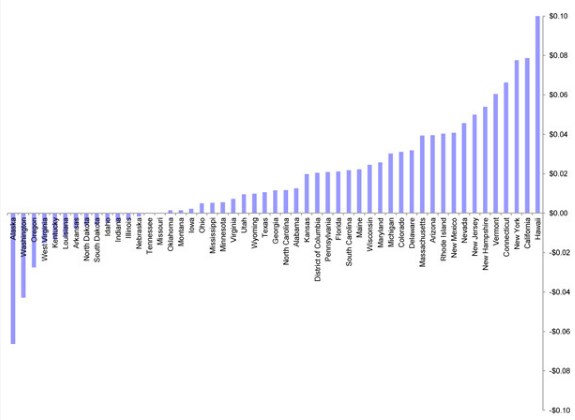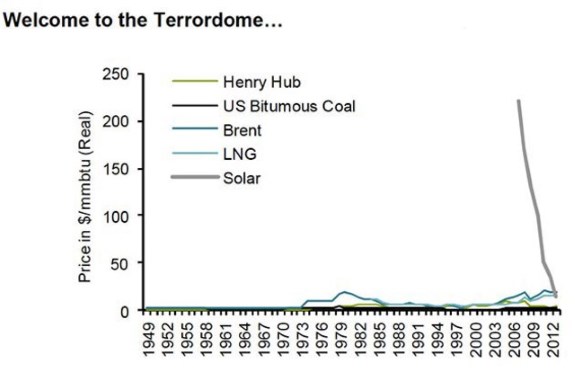The chart below highlights the anticipated savings of solar energy in each state in 2016, assuming a tax credit of 10 percent. The blue bars represent the levelized cost of solar power, assuming a conservative 20-year lifespan for the solar panels, minus average electricity prices, to show the savings for every kWh of electricity. In most U.S. states solar power comes out very favorably versus the grid, with Alaska, Washington and Oregon being notable exceptions.

One major factor that skews the number is that solar power is hard to compare with traditional power plants because solar power output is highly variable during the day and zero at night. This means there must always be a backup or a storage system to guarantee grid stability and makes it very hard to do an apples to apples comparison.
Still, solar looks very promising for the future because unlike fossil fuels solar is a highly evolving technology with increasing efficiency and even lower prices down the road. The chart below illustrates the astronomic increase of solar power cost efficiency in the past decade or so. Currently, solar is responsible for fewer than 1 percent of global energy capacity but the International Energy Agency (IEA) predicts it could be the top source of electricity by 2050.

Source: Bloomberg